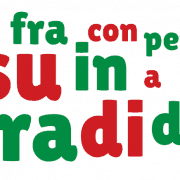Learning to say why in Italian is one of the first things to keep in mind when starting a conversation.
In fact, you realize that you could sometimes bump into incomplete sentences in case this word is missing.
The most popular term to express why in Italian is perché. Perché can be intended as an interrogative adverb when making questions; on the contrary, it becomes a causal conjunction in presence of answers. It is basically used when you hope to get more information about something that happened to you or someone else. According to the type of words preceding or following perché, you are able to stress more or less what you mean. In other cases, you can resort to different but still valid options like come mai, per quale motivo, a che scopo and so on.
Soon I’ll show you some of the most common ways to translate why in Italian.
Shall we begin?
before going any further, I also suggest you to refresh Italian Grammar with one of these useful books:
10 Common Ways to Say Why in Italian:
Here below you can find a list of 10 common ways of saying why in Italian and all different uses of perché in context:
- Perché?
- Perché no! / Perché no?
- E perché?
- Perché mai?
- Come mai?
- Per quale motivo? / Per quale ragione?
- A che scopo? / A che pro?
- Il perché
- Ma dai! / Suvvia!
- Beh / Che dire
Let’s see them together more closely:
1. Perché?

Let’s start with perché, which is one of the most widespread expressions to translate why in Italian. Generally, we use it when seeking explanations about someone’s actions or finding the reason why something is happening or just occured.
Examples:
Perché Giada non è venuta? La stavamo aspettando.
Why didn’t Giada come? We were waiting for her.
Perché non mi hai detto nulla? Avrei potuto aiutarti!
Why didn’t you tell me anything? I could have helped you!
Fun fact: do you know the famous song La partita di pallone by Italian singer Rita Pavone? Well, try to guess how many times the word perché repeats itself in the song! Did you manage? Almost 14 times!
2. Perché no! and Perché no?
Secondly, you need to know that perché can be followed by no in two specific cases.
- In the first one, it appears when you support someone’s proposal/idea of doing something. As you can see, this is the case we use an exclamation: perché no!
- In the second one, it occurs when you ask for explanations about something you were not allowed to do. Its equivalent in English is why not and as you can notice we use question mark: perché no?
Examples:
Ma perché non andiamo in centro più tardi? – Sì, perché no!
Why don’t we go downtown later? – Sure, why not!
Ti ho già detto che non puoi uscire stasera. – Uffa, perché no?
I already told you that you cannot go out tonight. – Ugh, why not?
3. E perché?
Furthermore, perché meaning why in Italian can be preceded by the conjunction e when expressing interest in something or somebody’s choices.
Examples:
Antonio ti ha chiesto di incontrarlo? E perché?
Did Antonio ask you to meet him? Why?
Isabella ha deciso di lasciare il lavoro? E perché?
Did Isabella decide to leave her job? Why?
Make sure not to confuse e as conjunction with è as the third person singular of the verb essere (to be).
4. Perché mai?

On the contrary, perché followed by the adverb mai (never) conveys the idea that you are investigating the reason for what they just told you. When uttering this expression, a sense of wonder usually arises.
Examples:
Perché mai Jackson ci avrebbe mentito? Non ha senso!
Why would Jackson lie to us? It makes no sense!
Perché mai lo avrebbe cacciato di casa? Che ha fatto di male?
Why would she kick him out? What did he do wrong?
As you may have noticed, the conditional tense has been employed in both sentences. On this occasion, you can just make assumptions about what happened since you don’t know the truth yet.
5. Come mai?
As you can see, in this expression come (how) takes the place of perché. Despite that, the meaning and the use of come mai are pretty much the same as in the preceding case of saying Why in Italian.
Examples:
Come mai non sei venuta alla festa di Gianna ieri sera?
Why didn’t you come to Gianna’s party yesterday night?
Come mai non ti ha voluto dire quello che è successo?
Why didn’t she want to tell you what happened?
Fun fact: in the popular song Come mai by the Italian band 883, you can hear come mai occurring over and over again.
6. Per quale motivo? / Per quale ragione?
Instead, per quale motivo or per quale ragione are great alternatives to indicate why in Italian. Both translate as for which reason. Plus, they are mainly employed when you specifically ask for more information about something that you struggle to understand.
Examples:
Per quale motivo non hai chiamato prima di venire?
Why didn’t you call me before coming over?
Per quale ragione Marika pensa che ce l’abbia con lei?
Why does Marika think I’m mad at her?
7. A che scopo? / a che pro?
Similarly, a che scopo and a che pro can be considered as other important ways to say why in Italian. They mean respectively for what purpose? and what’s the point?. In addition, they are mostly applied in very informal contexts when questioning the reason for someone’s decisions.
Examples:
Vuole vendere la casa e trasferirsi in Canada. Ok, ma a che scopo?
He wishes to sell his house and move to Canada. Ok, but why?
Ti darà il tuo regalo di Natale a Capodanno. Sì, ma a che scopo?
She is going to give you her Christmas present on New Year’s Eve. Yeah, but why?
8. Il perchè

Going on, it’s time to mention another interesting statement standing for why in Italian: il perché. As you can see, it is combined with a definite article. Regarding its usage, it is employed in the same way as the other expressions we saw until now.
Examples:
Oggi la lavastoviglie non funziona e non capisco il perché.
Today the dishwasher doesn’t work and I have no idea why.
Non ha risposto ai miei messaggi e vorrei sapere il perché.
He didn’t reply to my messages and I would like to know why.
Note that:
- You can even find il perché in combination with the preposition di (of) in certain circumstances.
Example:
Non si spiegano il perché della nostra scelta.
They can’t explain the why of our decision.
- Other possible solutions imply that perché may be replaced by the nouns motivo e causa meaning reason in English.
Example:
Non ho ancora capito il motivo del loro litigio.
I still don’t understand the why of their argument.
9. Ma dai! / Suvvia!
Equally important are the following translations of why in Italian: ma dai and suvvia. These two Italian exclamations are required when you want to highlight the senselessness of what your speaker has just told you.
In English, this concept is clearer since why might be intended as why are you making this obvious question?. Naturally, the question is incomplete and what remains is just why containing the whole meaning.
Examples:
Stai insinuando che ho copiato durante il test? Ma dai, certo che no!
Are you implying that I cheated on the test? Why, of course not!
Ci ha provato con tua moglie? Suvvia, non dire stupidaggini!
Did he flirt with your wife? Why, don’t be silly!
Note that suvvia has now become an old-fashioned word. Indeed, you can find it only in very formal contexts. Nevertheless, the most widespread form is su which lost a part of its components over the years. This interjection is used to exhort somebody to do something by the way.
10. Beh / Che dire
Also beh and che dire have the same meaning and use of the exclamations mentioned earlier. Besides that, they still remain valid alternatives to why in Italian when you are sick of employing why repeatedly.
Examples:
Se sono favorevole al matrimonio omosessuale? Beh, certo!
Am I in favor of same-sex marriage? Why, yes! Of course, I am!
Devono venire anche loro con noi? Che dire, mi sembra ovvio!
Are they coming with us, too? Why, absolutely! It’s pretty clear!
Why in Italian: the indirect interrogative clauses

Perhaps you already know that some words like how and why must be repeated when replying to questions. In this regard, we are talking about indirect interrogative clauses, primarily existing in the reported speech.
To better understand, this type of subordinate indirectly reports the question word in the answer.
Examples:
Non so perché se ne siano andati via così presto.
I don’t know why they left so early.
Dimmi perché hai disdetto la prenotazione all’ultimo minuto!
Tell me why you canceled our reservation at the last minute!
How to reply to questions: Why and Because in Italian.
This last paragraph might be unuseful to you. Apart from that, I’d like to say a few words on the topic in question anyway. As you know, one of the differences between the English and Italian languages is the use of why and because. In English, why is applied in questions, whereas because in answers. On the contrary, why in Italian is used both in questions and answers. For this reason, Italians usually make mistakes concerning the proper use of why and because in English.
Examples:
Perché stai piangendo, piccolina? – Perché mi manca mamma!
Why are you crying, sweetheart? – Because I miss my mum!
Perché non sei partito con lei? – Perché ieri ci siamo lasciati.
Why didn’t you go with her? – Because we broke up yesterday.
Learned how to build sentences with why in Italian? Well, now try to ask your Italian friend come mai you haven’t heard from him recently!







